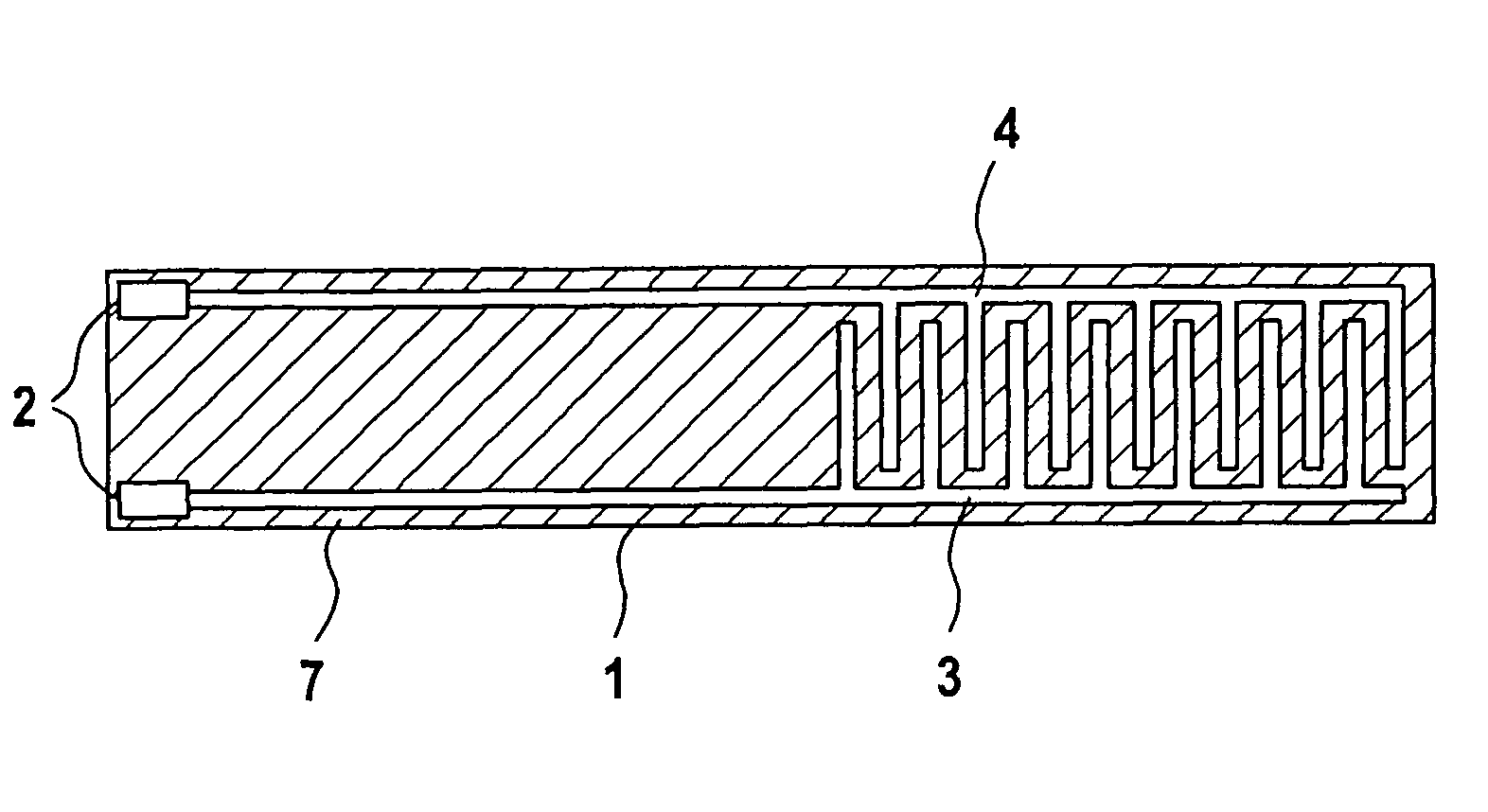Method for influencing soot deposits on sensors
a technology of sensors and soot, applied in the direction of instruments, suspensions, resistance/reactance/impedence, etc., to achieve the effect of enhancing the system's reliability
- Summary
- Abstract
- Description
- Claims
- Application Information
AI Technical Summary
Benefits of technology
Problems solved by technology
Method used
Image
Examples
Embodiment Construction
[0015]Sensor element 1 includes a substrate 7 used as a support, which may be made of an aluminum oxide ceramic, for example. A resistance measuring structure, having a first comb electrode 3 and a second comb electrode 4, is applied to substrate 7 used as support. The resistance measuring structure including first comb electrode 3 and second comb electrode 4 is used for measuring the electric resistance of a particle layer 5—see the illustration of FIG. 2, which covers first comb electrode 3 and second comb electrode 4 of sensor element 1. When a voltage is applied to voltage terminals 2 of sensor element 1, an inhomogeneous electric field 6 is formed between meshing comb electrodes 3, 4, see the illustration of FIG. 3, where the inhomogeneous electric field 6 is represented by field lines 9.
[0016]The particles, in particular soot particles, depositing on sensor element 1 may be considered electric dipoles in the electric field. Inhomogeneous electric field 6 exerts a resulting for...
PUM
| Property | Measurement | Unit |
|---|---|---|
| voltage | aaaaa | aaaaa |
| voltage | aaaaa | aaaaa |
| voltage | aaaaa | aaaaa |
Abstract
Description
Claims
Application Information
 Login to View More
Login to View More - R&D
- Intellectual Property
- Life Sciences
- Materials
- Tech Scout
- Unparalleled Data Quality
- Higher Quality Content
- 60% Fewer Hallucinations
Browse by: Latest US Patents, China's latest patents, Technical Efficacy Thesaurus, Application Domain, Technology Topic, Popular Technical Reports.
© 2025 PatSnap. All rights reserved.Legal|Privacy policy|Modern Slavery Act Transparency Statement|Sitemap|About US| Contact US: help@patsnap.com



